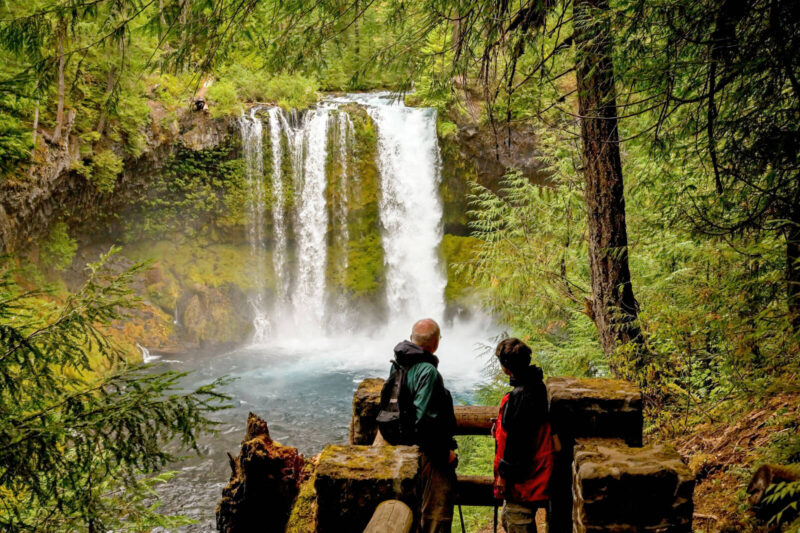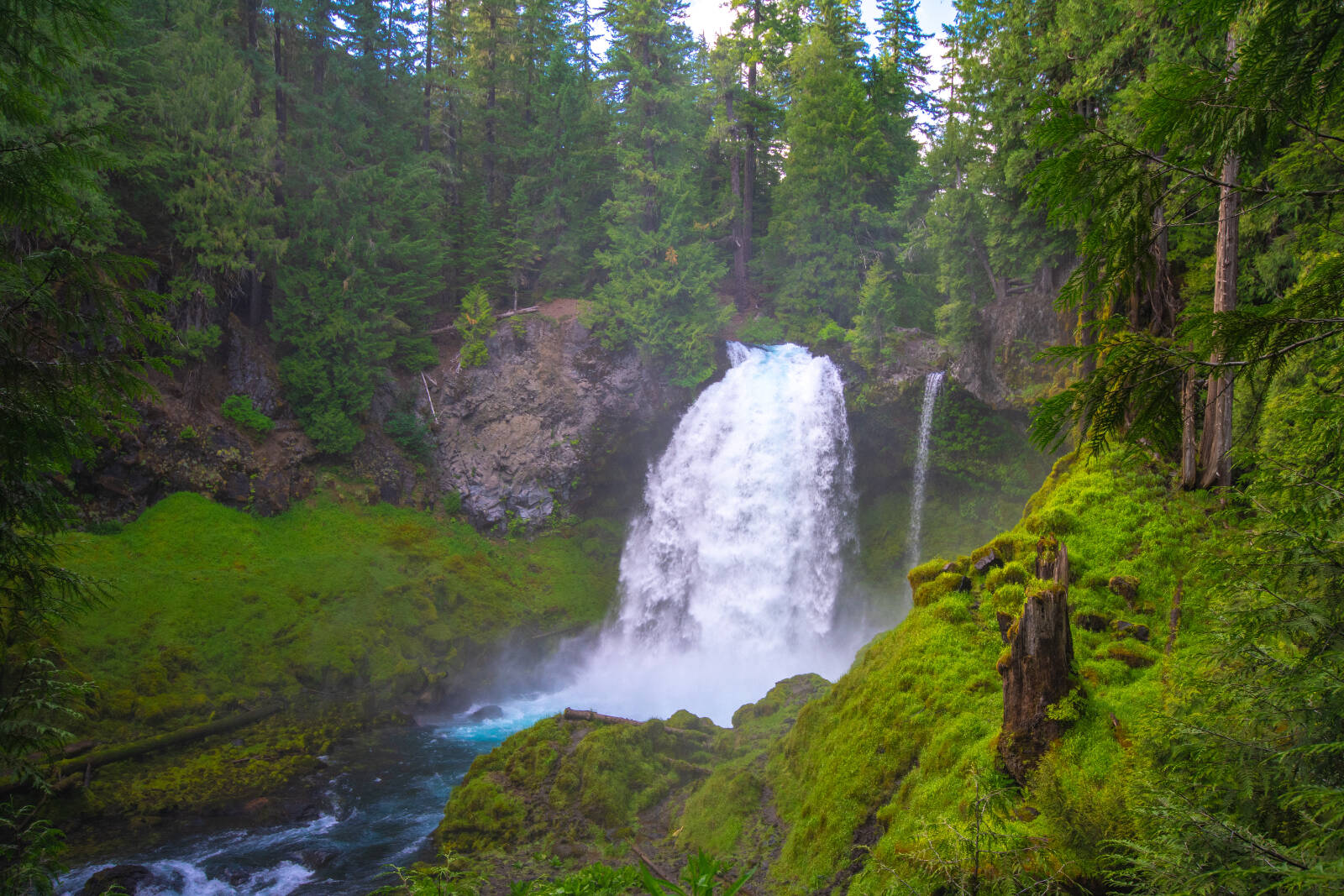By Mark Morical, The Bulletin (Bend, Ore.)
The McKenzie River is a beautiful destination at any time of year.
But one of the best times is early summer when temperatures are comfortable, the snow has melted and the waterfalls are gushing in all their glory.
I was driving home recently to Bend from Eugene and stopped to hike the Waterfalls Loop Trail along the McKenzie.
Tucked into the rugged, lush western slope of the Cascade Range between Central Oregon and Eugene, the McKenzie River National Recreation Trail has long been a favorite for hikers and mountain bikers. The three-mile Waterfalls Loop Trail, which incorporates a section of the McKenzie River Trail but is on the east bank of the river and is restricted to foot traffic, is one of the most scenic sections of the area.
From the parking area and viewpoint at Sahalie Falls, a little more than an hour’s drive northwest of Bend, I took the trail north up to the brink of the 120-foot-high Sahalie Falls, where mist from the falls sprayed back up toward the trail. From the falls, the hiker-only trail took me deep into the old-growth Douglas fir trees of the Willamette National Forest.
I crossed a bridge to the west side of the river where the Waterfalls Loop Trail connects to the trail. Other tiny waterfalls gurgled above the trail as I turned back south toward 90-foot Koosah Falls, the other waterfall that makes this section of the river such a draw.
The Makenzie River Trail between Sahalie Falls and Koosah Falls is covered in lava rock, making it extremely technical and challenging on a mountain bike. I was relieved to be on foot. I have biked the trail many times, but it was a welcome change of pace to hike this section of trail. Being on foot allowed me to really absorb all the subtle intricacies that make the trail so impressive: moss-covered boulders, deep blue pools of the river, and impossibly giant Douglas firs.
The Makenzie River Trail is built in such a way that hikers can stand just a few feet from the brink of Koosah Falls. At a viewpoint farther down the trail, the waterfall seems to suddenly appear out of the darkness of the forest.
Both Sahalie and Koosah waterfalls were formed by lava flows from about 3,000 years ago, according to the U.S. Forest Service. Sahalie is a “segmented” waterfall, meaning the stream diverges into two or three sections as it cascades. Koosah is a “block” waterfall, which descends as a single wide breadth.
I continued along the trail, downstream of Koosah Falls, taking in all the greenery that makes the area so different from trails in Central Oregon. While sand is often a deterrent at this time of year on hiking and biking trails closer to Bend, the Makenzie River Trail doesn’t seem to have that problem. The trail in late June was firm and tacky.
When I came to Carmen Diversion Reservoir, I followed the signs near the reservoir to get back to the east side of the McKenzie River and head back toward Sahalie Falls.
I walked past Koosah Falls again on my way to Sahalie. The hiker-only part of the loop (the east side) is a noticeably easier trail than the rock-covered trail on the west side of the loop.
The entire McKenzie River Trail is 26 miles, from its north end near Clear Lake (the headwaters of the McKenzie) to its south end near the McKenzie Ranger Station. Thousands of hikers and bikers run or hike the trail from end to end each year from the spring through the fall.
The waterfall section is maybe the most impressive part of one of Oregon’s most revered trails. But you could spend weeks discovering the many natural wonders of the McKenzie.
Plan your adventures throughout the West Coast at westcoasttraveller.com and follow us on Facebook and Instagram @thewestcoasttraveller. And for the top West Coast Travel stories of the week delivered right to your inbox, sign up for our weekly Armchair Traveller newsletter!












 Chilliwack Corn Maze celebrates 25 years of farm life
Chilliwack Corn Maze celebrates 25 years of farm life